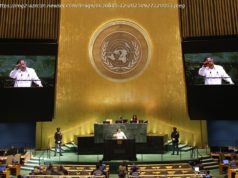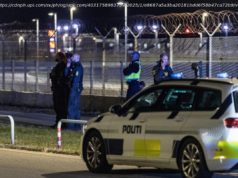Facing a court-imposed deadline, federal attorneys notified a judge that they will need more time to reunite migrant children separated from their families at the U. S. border.
LOS ANGELES — The Trump administration has asked a federal judge for more time to reunite families that were separated by immigration authorities at the southwest border, highlighting the challenge of connecting parents and children who have in some cases been detained thousands of miles apart and whose familial relationships are difficult to establish.
In a motion filed in Federal District Court in San Diego, the Department of Justice said that it had devoted “immense” resources to reunifying parents and children since June 26, when the judge imposed deadlines on the government for returning children to their families.
However, it said that more time was needed to “safely reunite families.” The Department of Health and Human Services, which is responsible for the children in shelters across the country, must follow procedures that are “time-consuming,” the government said.
The disclosure that the authorities may not be able to meet next week’s deadline contradicted assurances a day earlier from the Health and Human Services secretary Alex Azar, who had insisted that the agency would be able to comply with the court’s timeline despite a number of logistical problems. “H. H. S. is executing on our mission even with the constraints handed down by the courts,” he said in a conference call with reporters on Thursday.
Last week, Judge Dana M. Sabraw gave the government until July 10 to reunite children aged 4 and younger with a parent. He set July 26 as the deadline for older children.
The government’s request was to be addressed during a status conference the judge has called on Friday afternoon with lawyers from the government and from the American Civil Liberties Union, which filed a lawsuit challenging the separation of families as part of the administration’s stepped-up enforcement measures against illegal immigration.
“ The government does not wish to unnecessarily delay reunifications or burden class members,” the Justice Department said in its motion. “At the same time, however, the government has a strong interest in ensuring that any release of a child from government custody occurs in a manner that ensures the safety of that child.”
It proposed an “alternative timeline” that takes Health and Human Services procedures into account.
Other parts of the judge’s ruling are already being complied with, the government said: Families are no longer being separated at the border, and arrangements have been made for children and parents to communicate with each other, a provision which the judge had specified was to be in place by Friday.
DNA testing is being used to meet the judge’s timeline, the government said, but it noted that the court-imposed deadline could be difficult to meet because of the complexity of some cases.
“H. H. S. is working diligently to minimize the burdens of confirming parentage, and is expediting DNA verification,” the government said, adding, “That process takes meaningful time, even when it is expedited.”
Mr. Azar said on Thursday that nearly 3,000 children were in federal custody as a result of family separations intended to deter illegal immigration and that about 100 of them were under the age of 5. But records connecting children to their parents have in some cases disappeared, according to some of those working on the reunifications, leaving the authorities struggling to confirm connections between family members.
Mr. Azar said agency officials are struggling with the effects of previous policies and court decisions that prevent migrant families from being held in detention for extended periods of time.
“Any confusion is due to a broken immigration system and court orders,” Mr. Azar said. “It’s not here.”
The government said in its motion that reunification was happening more swiftly when parents were still in the custody of Immigration and Customs Enforcement rather than after they were released.
It also asked the judge to clarify whether the court’s order on reunifications applies to parents who have been deported. There are reports that some migrants agreed to be quickly deported, believing it would speed up the recovery of their children — only to board a plane and realize that their child would be left behind.
Other problems have occurred because parents and children are so widely separated. Many children were sent to facilities thousands of miles away from their parents, and some are too young or scared to provide accurate information about their parents or their journey.






